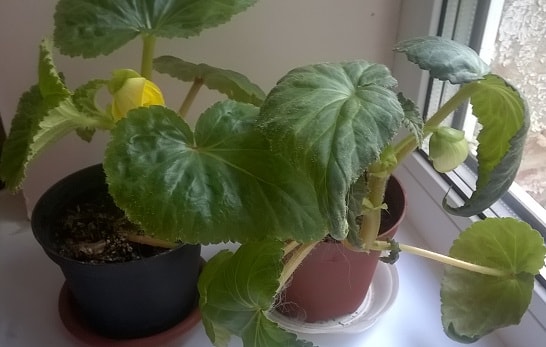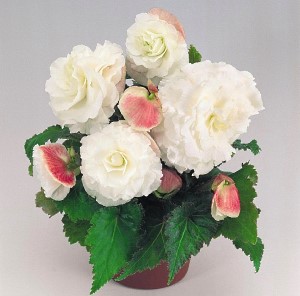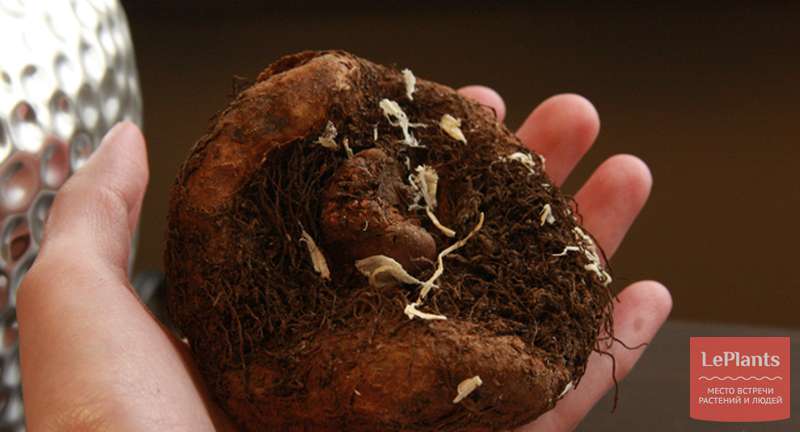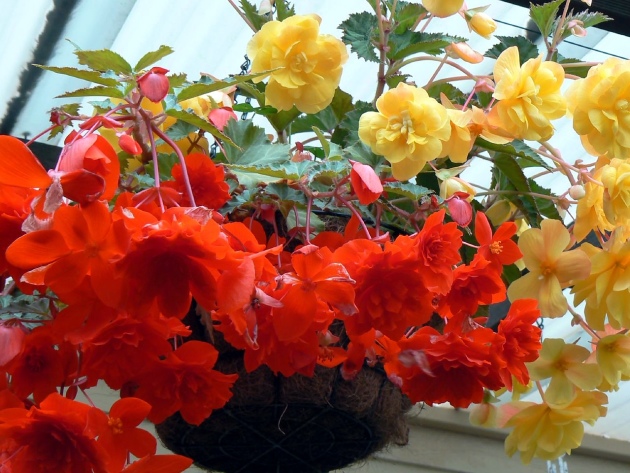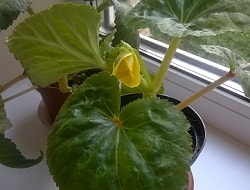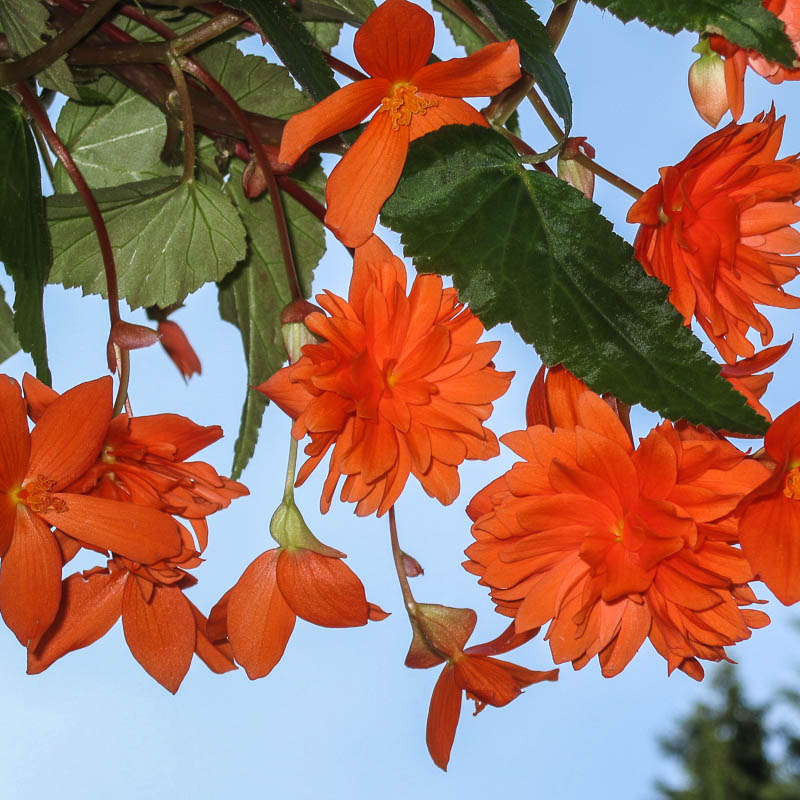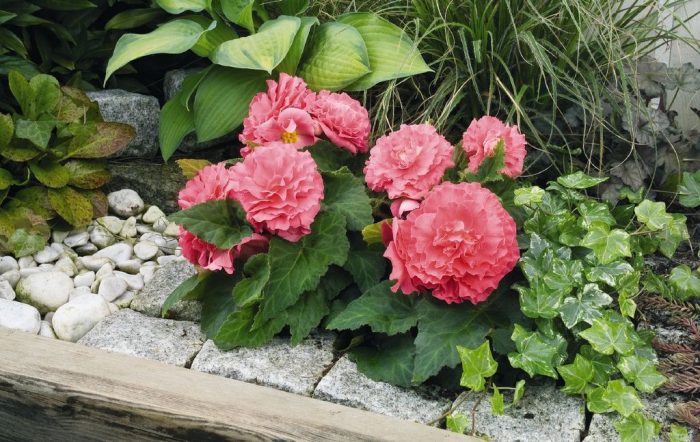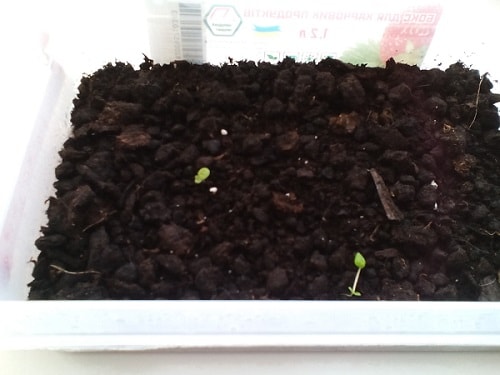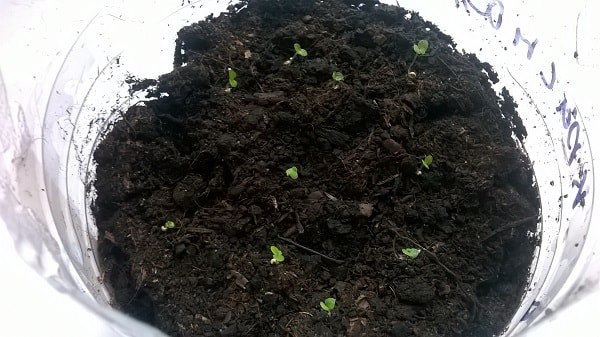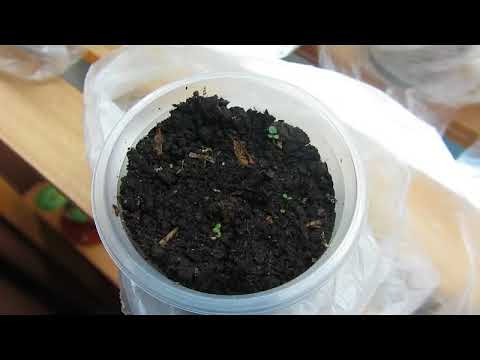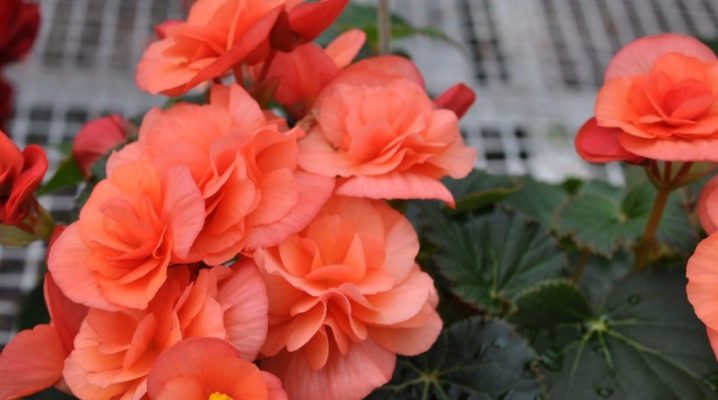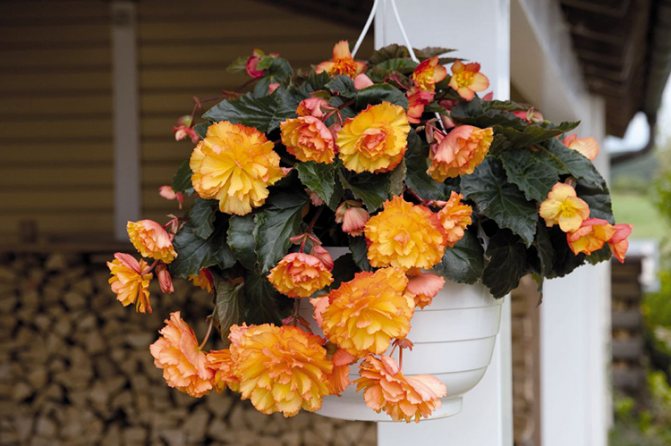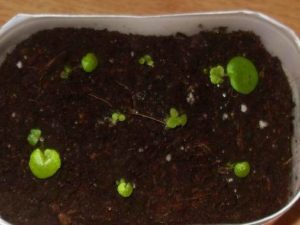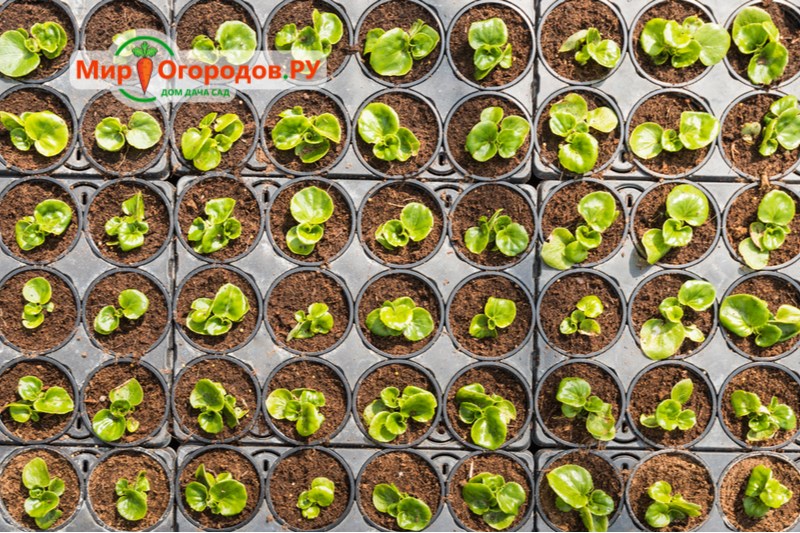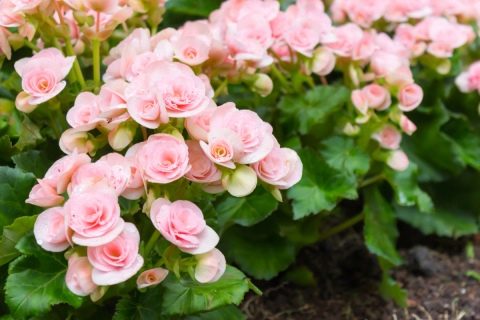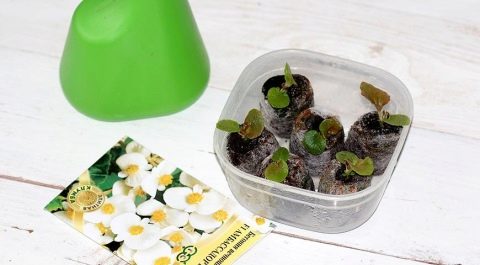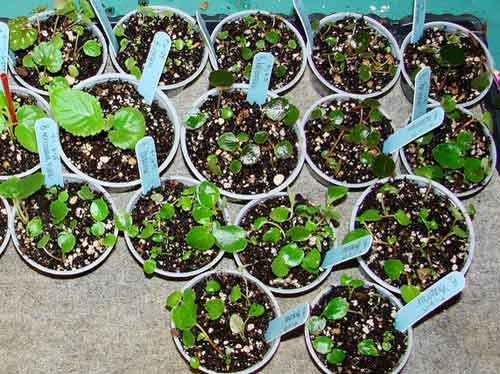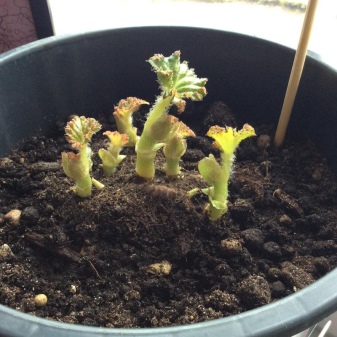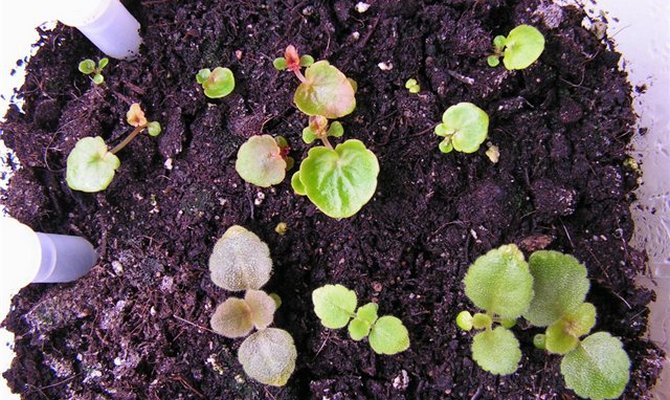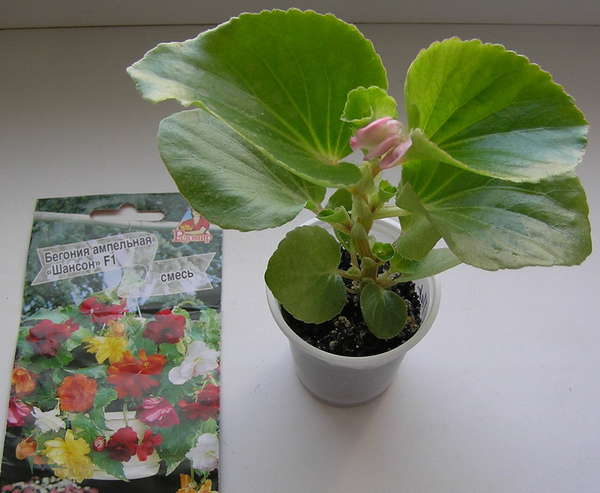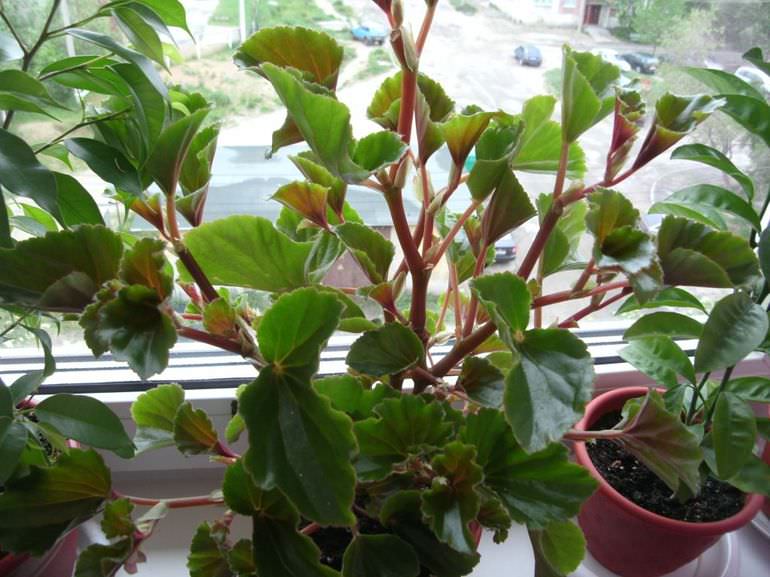Algorithm for breeding begonias from seeds at home
Reproduction of a flower with the help of seeds is a rather complex and painstaking process that requires adherence to many basic recommendations of agricultural technology. You can get acquainted with all the nuances of such reproduction using the detailed algorithm of actions and step-by-step photos.
Sowing dates
The appearance of the future plant and the period of its flowering depend on the sowing time. Florists recommend starting sowing in January in order to admire the lush flowering of the plant at the beginning of summer.
Note!
With early sowing, by the time of transplanting into an open pot, the begonia will have time to outgrow, which will significantly worsen the survival rate of seedlings in the new soil and will significantly affect the general condition of the flower.
In the case of sowing in the last days of February or early March, it will be much easier to maintain optimal conditions of detention. During this period, the activity of the sun increases significantly, and the daylight hours lasts much longer. However, with such a sowing time, you should not expect flowering before July.
You may be interested in:
Lobularia: growing from seeds at home Lubularia is a flower with which you can create beautiful landscapes. It is not difficult to take care of him, he can even cope with it ... Read more ...
Sowing in peat tablets
It is quite difficult to carry out the process of planting flower seeds, especially if untreated planting material was chosen. Ordinary seeds are practically unsuitable for spot sowing, so they are not planted in peat tablets. This is due to the fact that the small size of the untreated seeds will not allow them to be individually placed on the tablet surface. When sowing seeds in tablets, there is no need for further diving of seedlings.
Stages of sowing treated seeds into peat tablets:
Place the tablets in the water
Peat tablets
Wait until the tablets are well saturated with water.
Place one seed at a time on the surface of each tablet using a skewer or toothpick.
When sowing the material, it is very important not to allow it to sink deeply, since the seeds need a lot of light for active rooting. Sowing seeds
Moisten the seeds lightly with water
Moisturizing
Cover the seed tablets with a glass jar or plastic lid. Pills in a container
Place the seedling container in a warm place.
It is better to water the seedlings through the pallet, since this method of moisture intake will not allow the tablets to dry out.
It should be remembered that due to the nutritious shell, the pelleted seeds sprout a little later than usual. If all recommendations are followed, the first shoots may appear after 14 days. After their appearance, the need to keep plants in greenhouse conditions disappears.
Sowing in the ground
Sowing common seeds is best done directly in the ground, as their size makes them unsuitable for spot placement in peat tablets. However, before sowing such seeds, they must be mixed with sand for a more even distribution over the surface of the earth. (Pellet seeds can also be sown directly into the ground.)
Begonia sprouts
When planting seeds in the soil, it is recommended to adhere to the following sequence:
- Moisten the previously prepared soil mixture.
- Spread the seeds over the soil without submerging them.
- Sprinkle the seedlings lightly with water.
- Cover the container with seedlings with plastic wrap or glass.
- Move the container to a warm place.
It is better to moisturize tender begonia seedlings with a spray bottle. Subject to all the conditions of agricultural technology, the seeds will sprout 10-12 days after sowing. After the first shoots appear, the glass is removed, and the container with the seedlings is placed in a well-lit place. After the appearance of several leaves on young shoots, they must be dived into separate pots.
Breeding secrets

Reproduction of tuberous begonia at home by seeds is considered the most troublesome business.
Begonia is a very beautiful and quite popular flower among gardeners. She blooms profusely, and the carved leaves of her decorative varieties allow her to participate in the elements of the landscape design of the backyard of the house. Therefore, quite often the question arises about its reproduction at home. This can happen in two ways:
Reproduction of tuberous begonia at home by seeds is considered the most troublesome business. The fact is that the seeds of this plant are very small and before they are planted, they must undergo special care for better germination. After that, they can be planted in open ground under a film, having previously moistened them with a growth stimulator. This method is usually used when it is required to preserve the varietal characteristics of this flower.
A simpler and more common method would be to reproduce it at home with tubers that live for about 5 years. It is enough just to divide the tuber into 2 or 3 parts, so that each of them has at least 2 buds, and plant them in peat or directly into the soil. After that, carrying out elementary care for them, you can get several plants from one.
Alternatively, begonia can be propagated by cuttings. This is usually done in May. The strongest shoot is cut from the plant, the height of which should be at least 10 cm, it is placed in moistened peat and occasionally watered. In this case, the main thing is also not to overflow, otherwise the planted stalk can rot and disappear.

Alternatively, begonia can be propagated by cuttings.
But most often this garden flower is bought in pots and, after the danger of spring frosts has passed, they are transplanted to a flower bed in the garden. Thus, royal begonia or any of its varieties may appear in your flower bed.
How to plant begonias with seeds? Detailed instructions with photo
So, in order to grow begonia from seeds (tuberous and ever-flowering), you need to buy fresh seed. The grains should be harvested this year. Next, you need to organize a greenhouse and pick up the soil. Food containers with transparent (non-colored) walls and a lid are often used as a greenhouse. This guarantees good illumination of the seedlings. You can take a special container for seedlings. After sowing, it is covered with glass or plastic wrap.
I sowed begonia seeds in a regular food tray with transparent walls, I also used transparent plastic water bottles, having cut them off beforehand. The resulting design is shown in the photo below. Such a greenhouse is compact and costs absolutely nothing.
Soil for growing begonias from seeds. You can buy special primer. This is the land of Begonia, where pH = 5.5-6.5. Some growers like peat tablets. Before planting seeds, peat tablets are simply poured with warm water, they wait until they swell. If you pour boiling water over peat tablets, you need to wait a little. Peat tablets should not only swell well, but also cool down. The advantages of peat tablets: the plant that grows in them does not need to be dived. When the roots of the plant are completely entwined with the peat tablet, the latter can simply be transferred to a pot of soil. That is, picking in its full sense is not carried out, the roots of the plant do not experience stress.
I don't like peat tablets. Why? It is difficult to control their moisture content. Peat holds moisture well.While the surface of the peat pellet is dry, the inside remains moist. If you miss this moment and regulate watering based on the moisture level of the peat surface, then you can fill the plant. And some plants react very painfully to waterlogging. If begonias can be waterlogged a couple of times, then, for example, gerberas are very sensitive to overflow and immediately begin to turn yellow.
So, based on my purely practical experience, I plant begonia seeds in universal soil (it is easier to find in stores, compared to specialized soil mixtures) with the addition of coconut fiber. I do not add sifted sand to the soil, since coconut fiber increases the moisture and air permeability of the soil. I don't add vermiculite either (there is a small amount of it in the universal soil and that's enough). The mixture of universal soil and coconut fiber may dry out faster than soil + vermiculite, but I'm sure my seedlings will not rot. And the greenhouse helps to maintain the moisture content of the earth at a constant level.
Planting takes place as follows: drainage holes are necessarily made in the container. Small expanded clay is placed on the bottom. Next, the prepared soil is poured. It is leveled and watered with a spray bottle. The soil should be moist, but not very wet.
Next, begonia seeds (as shown in the photo above) are laid out on the surface of the soil at a distance of 1 cm from each other. The grains are very small, like dust, and therefore a toothpick or a needle will come in handy here. Once again, the soil is carefully watered from a spray bottle. You do not need to be very zealous with the pressure of water, otherwise the small seeds will simply be washed away. The seeds do not need to be pressed into the ground or sprinkled with earth on top. This negatively affects germination.
After watering, the greenhouse is closed and placed in a bright place for germination. The recommended germination temperature is + 20… + 24 degrees. But I came to the conclusion that the germination temperature simply should not drop below +17 degrees. It is imperative to organize the backlight 12 hours a day if there is not enough natural light. This could be a fluorescent lamp. It is preferable to locate greenhouses on windows on the east or west side. How to water? Typically, the greenhouse retains high air humidity, but sometimes the soil needs to be watered with warm water. Bottom watering is not recommended. I water either with a syringe (a drop of water under each plant) or with a spray bottle. But with the pressure of water, you need to be more careful, otherwise the seeds are easily washed off from the soil surface.
If condensation forms on a greenhouse with begonia seeds, this indicates a high humidity of both the air and the soil inside. To fix everything, increase the time for airing the greenhouse (2 times a day for 20 minutes). Watering is not carried out.
Varieties and types of tuberous begonias
Not only a professional florist, but also a novice amateur gardener is able to grow a chic, abundantly blooming flower.
We advise you to read these articles:
Favorable days for planting tomatoes in March 2020 Favorable days for planting eustoma in March 2020
Auspicious days for planting garlic in 2020 according to the lunar calendar
There are 3 main subgroups of tuberous begonia:
- with large flowers;
- with medium flowers;
- with small flowers (simple, double).
However, this is not the whole list of cultural divisions. The varieties and types of tuberous begonias have a much larger list.

Planting a begonia tuber - basic steps
Treatment with drugs
Immediately before planting begonia tubers begins, they should be soaked in a growth stimulator (Epin, Zircon, Stimul, etc.) according to the instructions. In order to further protect them from decay, treat the tubers with a weak solution of potassium permanganate or fungicide ("Maxim", "Alirin", "Fitolavin", etc.).These activities are generally important for all corms, and tuberous begonia is no exception here (you can see how to plant the rest of corms in our "Encyclopedia").
After processing, the tubers can be laid out in rows in trays filled with damp substrate (peat, sand, cotton cloth, table napkins, toilet paper), covered with foil and placed in a warm place for rooting. Remember to ventilate containers and keep humidity. There are tubers that sprout for a long time. Be patient.
Planting tuberous begonias at home in separate bowls should be planned for March or late February, when the nodules will give noticeable roots.
ON THE PHOTO: If you got too "shaggy" tuber, before planting, remove some of the old roots and dried soil. It will be easier for young roots to break through.
Choosing a container for planting begonias
Planting tuberous begonias at home begins with choosing the container that best meets the requirements of the plant. For planting, it is worth taking a wide, but shallow pot - the root system of the plant is superficial, the roots will not go deep, but there should be enough space in breadth. Choose a container of at least three liters. There must be good drainage.
If you are going to transfer begonias to the garden in the future, you can plant them in small liter pots with a diameter of 12 cm.
Getting started planting tuberous begonia
Manufacturers often recommend planting begonia with a tuber at a depth of 5 cm.However, it will be better if you plant it so that the buds are visible. To do this, a small depression is made in a well-moistened soil, and then the nodule itself is placed and slightly pressed into it.
ON THE PHOTO: When planting, the edges of the begonias tuber should rise approximately 0.5-1 cm above the soil surface.
It is necessary to add soil as the shoots appear and grow.
Tuberous begonia care after planting
After the planting of begonias tubers has been completed, pots or on a light windowsill, but not in direct sunlight. Watering is done in moderation so as not to soak the tubers themselves. They also cannot stand overdrying of the soil. Watering can be increased when leaves appear on the planted tuberous begonia, but should be watered sparingly and preferably in a pan.
Figuring out how to plant a begonia tuber correctly is only half the battle (albeit quite important). Further, the plant needs to be provided with proper care during the entire growing season. The temperature of the content should be + 16-18 ° C, and the air is sufficiently humid (40-50%).
The supply of fresh air, rich in carbon dioxide, will accelerate the growth of begonias. At the same time, do not forget to shade them from the bright sun, to which young plants are very sensitive.
IN THE PHOTO: Arrange the tubers so that there is enough space between them for watering. When watering from above, moisten the soil directly, water should never get into the groove on the tuber!
Flower propagation
Spring is the most suitable period for plant propagation due to its good rooting rate. Plant propagation occurs in several ways:

It is rather troublesome to propagate begonias by seeds, as they sometimes may not sprout. Basically, decorative deciduous varieties are propagated in this way. The growing period for seedlings takes about two months. Seeds are sown in well-moistened soil.
Use a plastic freezer container of suitable size. Sow on top of the soil, without covering it with earth and without tamping. The container is closed and placed in a warm place for 2-3 weeks. After the majority of shoots appear, they dive 2 times. The period between the first and second pick is about 1 month.
Cutting is the simplest and most common way. It is very effective, as it retains all the characteristics of the mother plant.In this way, plants can be propagated in spring, summer and autumn. In the spring, a suitable cutting is broken off from the tuber and transplanted into a separate pot for rooting. Do not deepen much, the growth point should remain on the surface, not in contact with the ground. On the awakened tuber, there are always several buds. If there are more than three of them, the extra sprout can always be used for reproduction. The plant takes root within three weeks.
From time to time, cuttings appear on begonias in the leaf axils. They can also be used for breeding. With a sharp knife, they are cut off, freed from the buds and planted for rooting in another pot. Cuttings in the leaf axils are formed when the plant enters the active flowering phase. In this way, begonias can be propagated in summer and early autumn.
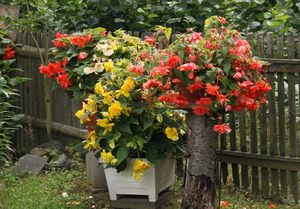 The vegetative method is used to rejuvenate 2 - 3 year old shoots. To do this, select large tubers with three or four buds and carefully cut them into pieces with a sharp knife so that each piece has one bud. Sections are treated with charcoal or covered with brilliant green, dried and planted in the ground.
The vegetative method is used to rejuvenate 2 - 3 year old shoots. To do this, select large tubers with three or four buds and carefully cut them into pieces with a sharp knife so that each piece has one bud. Sections are treated with charcoal or covered with brilliant green, dried and planted in the ground.
Tuberous begonia leaf is very reluctant to reproduce. The leaf is germinated in a glass of water until roots are formed, then planted in a pot. This method is sometimes used successfully, but it is rather difficult to grow a full-fledged tuber.
Dormant period
Tuberous begonias reproduce well. Cuttings of the first year do not go to rest, since the tuber has not yet been formed. The plant needs regular care and periodic handling. Observing the growth of the root system, it just needs to be periodically transplanted from a pot to a slightly larger pot. There can be two or three such transplants.
Before sending the tubers to rest (and this usually happens at the end of autumn), there is a preparation period when the frequency of watering is reduced. Begonia leaves turn yellow and become stained - these are all signs of aging, not disease. When the main part of the leaves falls off, the plant is cut off, leaving a stump 5-10 cm high. Then the tubers are dug out, trying not to break the stump, and put into a container for drying. The stump from the tuber will disappear by itself in a few days.
After that, you need to wait a few more days until the place from the hemp dries up. Now the tubers can be packed for hibernation. It is best to put them in plastic bags with a small amount of moistened moss or sawdust, place them in a cardboard box and put them away in a cool place. The main thing is that the light does not hit the tubers, stimulating them to wake up ahead of time. If you follow all the rules for growing begonias, the results will always delight you with their beauty.
Growing begonias through tubers
Tubers should be purchased in late February - early March. The optimal time for planting begonias with tubers is March.
If you have saved begonia tubers in winter, then in March they should be taken out of storage and prepared for planting.
Processing tubers before planting
First, if possible, it is necessary to remove dry roots from the convex part so that the tuber is clean and better treated with preparations (you can do this with your hands or with scissors).
After cleaning, you should start processing begonia tubers, more precisely, to dressing them.
You can pickle the tubers in one of the fungicides, for example, in "Augustine for pickling planting material" (consumption - 2 ml of agent per 1 liter of water). You need to keep the tubers in a warm solution for 20-40 minutes.
Additionally, you can soak the tubers in a growth stimulator, for example, in Epin (consumption of 1-2 drops of the product per 1 glass of water).
Capacity and soil mixture
The container for growing begonias from tubers should not be high, because in a plant, all the roots are on the surface and do not go deep into the ground. If you take a deep container, then moisture will stagnate below, and the soil may turn sour.In other words, the container should be wider than tall.
The land must be necessarily loose and of high quality. The main thing is that there is a lot of air in the soil, in other words, it must be very breathable.
You can buy ready-made special soil for begonias at a garden store or prepare your own according to the recipe below. In general, it is completely identical to the soil for planting seeds, which, in fact, is not surprising.
Recipe for potting soil mix for planting begonia tubers:
- 2 pieces of leafy land;
- 1 part of humus;
- 1 part sand;
- 1 part high-moor peat.
As in the case of preparing the ground for planting seeds, the soil mixture must be sifted and disinfected well.
Landing
Step-by-step method of planting begonia tubers:
- Make good drainage.
- Fill the container with soil and do not compact (the earth will compact itself during watering), just level it slightly.
- It is necessary to plant begonias tubers with the convex part down, and the concave part up (not the other way around!), Because buds are formed precisely from the concave side (where the stump is from the past stem). As in the case of pickling, it is necessary to bury the tuber about halfway into the ground so that the upper part, where the bud is located, is not in the ground, otherwise it can rot.
- After that, you should shed the soil around the tuber with a solution of phytosporin (according to the instructions) for disinfection). Moreover, it is advisable to do this at the edges, and not next to the plant.
- Cover with a lid or plastic bag. But some gardeners do not recommend covering the planting if your room is already hot enough and high humidity.
- Place in a warm and bright place.
Video: how to plant tuberous begonia
Plant care after planting
Begonias usually begin to germinate after a couple of weeks.
Further, it is necessary to ensure that the soil does not dry out and water as needed, but not overflow.
Begonia responds very well to long-term fertilization, so that, unlike one-time fertilizers, they are gradually and evenly distributed, and the plant receives nutrients with each watering.
Planting seedlings in the garden
As in the case of seedlings, which were grown from seeds, plant begonias from tubers in open ground as soon as the threat of return spring frosts has passed, in other words, starting from the middle of May, after having previously hardened.
The place for begonias is chosen sunny. The soil should be fertile, loose and breathable.
The depth of the planting hole should correspond to the size of the seedling root system.
The scheme for planting begonias in open ground: undersized plants are planted at a distance of 15-20 centimeters from each other, and tall ones - 30-40 cm.
After planting, the plant should be well mulched and watered.
Further care in the garden for begonias grown from tubers completely coincides with care when growing from seeds.
The only difference is that such plants bloom a couple of weeks earlier.
How to propagate begonia at home?
The plant is propagated in different ways: tubers, seeds, cuttings.
Propagation of begonias by seeds
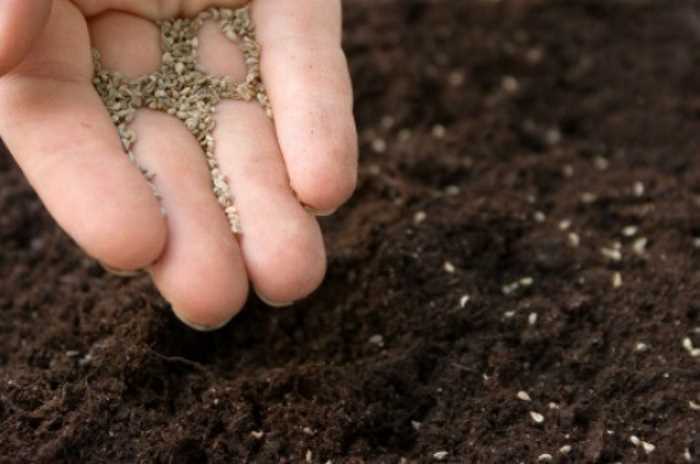
Advantages of breeding begonias from seeds:
- profitable material savings, since such seed is inexpensive;
- fresh seeds are usually of very good quality and germinate well. And keeping the seed is not difficult at all.
Growing seedlings
To get a beautiful, elegant plant, you must follow some rules for growing seedlings from seeds and caring for them.
How to prepare the soil
Correctly selected soil is an important condition for the friendly germination of seeds and good growth of seedlings. Begonia prefers slightly acidic or neutral nutrient soils. A special seed primer can be purchased at a flower shop. It is also quite easy to prepare the soil mixture yourself: mix peat crumbs, sod land and sand in equal parts.To prevent the possibility of infection of seedlings with some fungi, the soil is disinfected. This can be done in different ways:
- The earth is frozen for a while.
- The soil is watered with boiling water.
- The soil is treated with a weak solution of potassium permanganate.
A centimeter drainage layer (expanded clay, small broken brick, pebbles) is poured into the container for seedlings. Pour earth on top.
Sowing seeds
It is recommended to start working with seeds in late January-early February. In order for the balcony / flowerbed to be constantly decorated with flowering begonias, it is advisable to sow the seeds several times (in stages).
When choosing seeds, it is recommended to pay attention to granular seed. The pellets are quite large (larger than normal seed) and are easier to handle
On the eve of sowing, the soil is slightly moistened. It is better to do this with a sprayer, then the surface of the soil will remain flat, without grooves.
Planting stages:
- Seeds are laid out on the surface of the soil in rows. In addition, it is not necessary to sprinkle the granules with earth, since the begonia sprouts are already quite thin and weak. The container is covered with glass or plastic wrap.
- If there are peat tablets, then you can germinate seeds on them. The tablets are pre-moistened so that they absorb moisture and swell. The seeds are spread on a peat surface and the boxes with a peat base are also covered.
- Seeds germinate in 2-3 weeks. Optimal conditions for obtaining friendly shoots: air temperature + 25˚C, good lighting. Special watering during this period is not required - it is enough to moisten the soil surface with warm water from the sprayer. Do not immediately remove the covering material as soon as the first shoots appear. To prevent excessive humidity in the air, it is recommended to open the container for a short time for ventilation. In this case, it is necessary to exclude direct sunlight on the sprouts. Also, you can not install boxes with seedlings in drafts. In order not to damage the delicate seedlings, you can pour water into the tray to moisten the soil.
Biological description of the plant
Organizing a botanical expedition in the Caribbean, the French quartermaster and passionate lover of exotic plants Michel Begon could not have imagined that his name would be widely known in the centuries.

Lat. Begonia
Found during a scientific raid by the monk Charles Plumier, unknown plants were described and named after his patron saint in 1687 - begonias. From that moment on, the era of cultivation of new and amazingly beautiful plants began.
Tuberous begonias were discovered in the middle of the 19th century. This was the impetus for the rapid development of hybridization, as a result of which a group of large flowering plants was bred. Begonias do not have a classification; they are conventionally divided into groups according to external features and the nature of the root system.
In their natural environment, begonias grow in South America, Asia and Africa. Plants are especially common in tropical regions with humid forests or in mountainous areas with subtropical climates
This is a perennial plant, often herbaceous, in some cases it can be a woody shrub. Characteristic:
The stem is fleshy, erect or creeping with characteristic and pronounced nodes. Reaches a length of 20 to 60 cm.
Succulent leaves are arranged alternately on the stem and are often heart-shaped. They are distinguished by a variety of shapes, textures and shades.
The plant has a complex paniculate inflorescence and dioecious flowers. Different hybrids have simple and double wide-opening buds. The main palette of colors: red, yellow and white with all accompanying shades, and in some cases with a border or specks. Flowers, depending on the species, can be large and small.
The root system of begonia is shallow and weak, very sensitive to the quality of irrigation and soil.
Forms a tuber - a modified shoot, which is a source of nutrients for the plant in the off-season.
The fruit is a three-nested capsule, inside which there are very small seeds with an average size of 0.060 mm.

This begonia has many varieties and hybrids, among which you can choose tall and compact, erect and ampelous, with lush or modest flowers of the plant.
The main manufacturer is Belgium.
The planting material of manufacturing firms of this country is distinguished by its special quality, high survival rate and correct development of the plant in the future.


